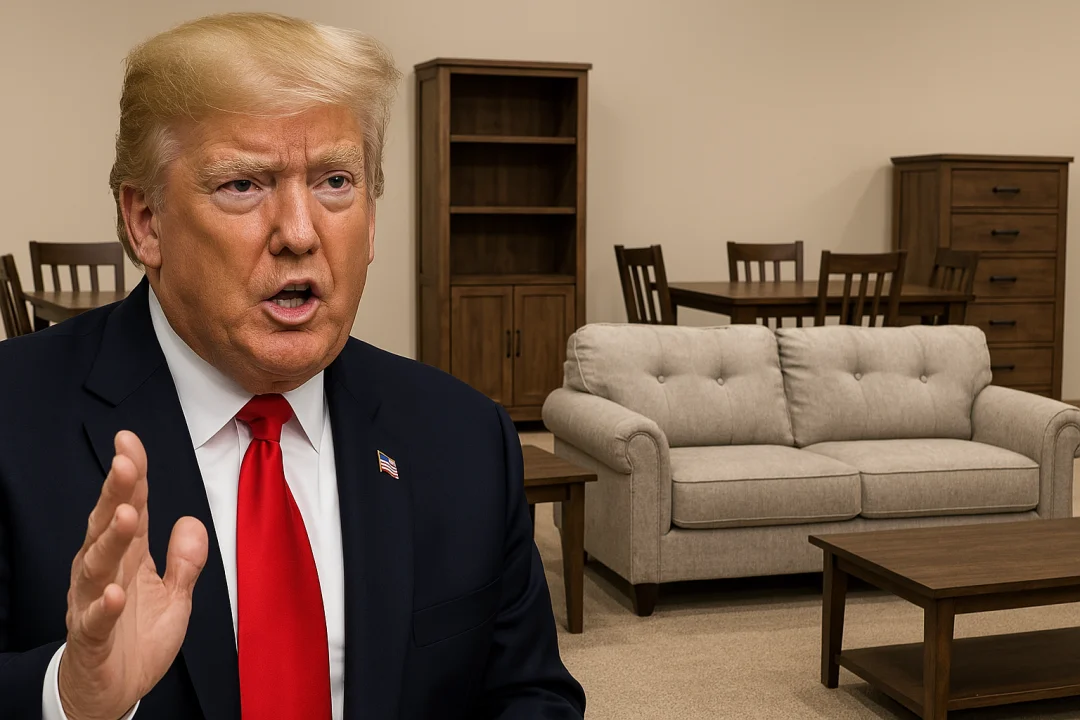In a move that could dramatically reshape the global furniture industry, President Donald Trump has introduced reciprocal tariffs on imports from multiple countries. These tariffs, which range from 10% to 50%, are designed to mirror or counter the duties that other nations impose on U.S. goods, addressing what the Trump administration calls unfair trade practices. With the United States being the world’s largest consumer market, this decision is sending ripples through the furniture sector, potentially triggering the most significant sourcing realignment in decades.
How Trump’s Tariffs Impact the Furniture Industry
The furniture industry relies heavily on imports, with countries like China and Vietnam serving as key manufacturing hubs. However, Trump’s reciprocal tariffs—such as a 54% duty on Chinese goods and a 46% tariff on Vietnamese imports—are poised to disrupt this supply chain. The sharp increase in import costs is pushing furniture companies to rethink their sourcing strategies.
“Trump’s tariffs could lead to a significant realignment in the furniture sourcing landscape,” says industry analyst Jane Doe. “Companies are now seeking to diversify their supply chains to mitigate the impact of higher costs.” This shift could mean moving away from traditional suppliers in Asia toward alternative regions or even bringing production back to the U.S.
Potential Consequences of a Sourcing Realignment
A realignment in furniture sourcing could have wide-ranging effects. Companies might turn to countries with lower tariffs or existing trade agreements, such as Mexico or nations in Southeast Asia not hit by the steepest duties. This could spark increased competition among furniture-producing countries, reshaping market dynamics.
However, adapting to new suppliers isn’t straightforward. “We’re closely monitoring the situation and exploring alternative sourcing options,” says John Smith, CEO of a major furniture company. “But it’s not as simple as switching suppliers overnight. Quality, production capacity, and logistics all need to align.” Additionally, higher import costs could lead to increased furniture prices for consumers, potentially slowing demand in an already competitive market.
Global Trade Implications
Beyond the U.S., Trump’s tariffs are straining international trade relationships. China, a dominant player in furniture manufacturing, has signaled plans to retaliate with its own tariffs on U.S. goods. This escalation could deepen the ongoing trade war, creating a more complex environment for furniture companies worldwide.
On the flip side, the tariffs might encourage a revival of domestic manufacturing in the U.S. If importing becomes too costly, companies may invest in American production facilities. However, this shift would require significant time and resources, including new factories and a skilled workforce—changes that won’t happen overnight.
What’s Next for the Furniture Industry?
As Trump’s reciprocal tariffs take effect, the furniture industry stands at a crossroads. Companies are scrambling to adapt, weighing the costs of new sourcing options against the risks of passing price hikes onto consumers. The full scope of this trade policy’s impact remains uncertain, but one thing is clear: the furniture sector is on the brink of a transformation not seen in decades.
With the situation still unfolding, industry watchers predict further developments as global trade partners respond. Whether this leads to a stronger U.S. manufacturing base or a reshuffling of the global furniture market, Trump’s tariffs have set the stage for a seismic shift.








